CHAPTER VII
TODAY
As we enter the last five years of our story of Pittsfield, it may be of interest to look back for a moment at two periods of history that seem to have much in common: the twenty years from 1880 to 1900 and the two decades from 1940 to 1960. In both these spans we find young, imaginative, and aggressive residents who were not only successful in their own careers, but were conscious of their civic responsibilities and were dedicated to building a better community. Consider the constructive ideas of C. B. Haskell, the young editor of The Advertiser; the ambitious industrial expansion programs of the Dobsons; the friendly hospitality offered by innkeeper Isaac Lancey; the exuberant personality of Mart Parks; the lively merchandising of Nat Perkins, C. E. Vickery, Hunter and McMaster, Henry Libby, C. A. Contant. A. H. Cornforth and other shopkeepers; or the gala racing shows sponsored by Col. Walter G. Morrill and his associates. Then think of the early 1940’s, led by Joe Cianchette and the men of the Kiwanis. Recall the rehabilitation of the Waverley Mill, The Lancey House, The Advertiser, the Bijou Theatre, and the Airport. Remember the cooperative effort to bring the Edwards Company to Pittsfield, to build a swimming pool, and to make a ski slope possible. These are a few of the achievements of this latter period, reminiscent of earlier days.
NEW LEADERSHIP
At the end of these two eras, however, the parallel ceases. As we have noted, there seemed to be a slacking off after the spurt of the 80’s and 90’s. What happened after the 40’s and 50’s certainly cannot be described as something lackadaisical or complacent—quite the opposite! The spirit of those years continued, but under new leadership. That is as it should be. The new generation was not accepting the past as good enough. It was picking up the tools, adding to them, improving them, and going forward. This is good, and today we should be grateful to these young men and women for what they have done and probably will continue to do for the future of our town.
159
SEBASTICOOK VALLEY HOSPITAL
Lets take a look at what’s happened in the last five years. Shall we start off with one of the largest and finest community projects in local history — the Sebasticook Valley Hospital? This was proposed and promoted by the so-called younger generation. The idea was discussed in Kiwanis a year earlier, but nothing came of it. It was the Athenaeum Club, a group of young women with a desire to do something worthwhile for their home town, that initiated the project in 1959. Mrs. Merlon Tilton was President at that time. The idea was sold to other clubs and organizations until it was generally accepted locally and then a move was made to put it on an area basis. The Sebasticook Valley Hospital Associates was formed with Carl Cianchette as President; H. King Cummings of Newport, Vice President; DeWolfe Finch, Treasurer; and James Murphy, Secretary.
In April of 1960, John L. Baxter, Jr., was chosen to head the drive for funds to match the Hill-Burton allotment of $235,000. It was an intensive campaign, involving many people and reaching into Waldo and Penobscot counties. Mr. and Mrs. Luther Leighton made the Grove Hill site possible by donating four acres of land. Sketches of the proposed building were drawn by Crowell, Lancaster, Higgins, and Webster, architects. By July 1961, the funds were assured and construction on Grove Hill was begun.
Braving cold, bleak October weather, 200 persons witnessed the ceremonies of laying the cornerstone by Carl E. Cianchette, assisted by Dr. George I. Higgins of Newport in whose honor one wing of the hospital was named.
While construction was in progress during 1962 and the first of 1963, a great deal of preparation had to be made for the opening of the hospital. Carl Cianchette continued as President. Clifford Wright, John Baxter, Earle Friend, H. King Cumrnings, and John Gilman made up the Executive Committee. DeWolfe Finch, L. A. Dysart, and C. C. Merrill were chosen for the Investment Committee. Ronello Reynolds, Adrian Hallee and Mr. Cummings were members of the Medical Committee. Mrs. Etta Dodge was selected to be the first Administrator. Dr. Ernest D. Humphreys of Pittsfield headed the Medical Staff, composed of Dr. Ernest Stein and Dr. William Thompson of Pittsfield; Dr. George T. Higgins and Dr. Paul Burke of Newport.
160
Later, Dr. Thompson resigned and was replaced by Dr. John P. Dow. On the staff of Registered Nurses were Carol Turner, Eleanor Richardson, Luise Cirillo, and Grace Brown.
On March 3rd, the hospital was officially opened with Governor and Mrs. John H. Reed present to bring the greetings and congratulations of the state. More than 7000 persons were in attendance. Gilman Friend of Newport was master of ceremonies. Rev. Antonio Girardin of St. Agnes Church gave the invocation. William Salters, representing Stewart and Williams, the builders; Edward Webster of Crowell, Lancaster, Higgins, and Webster, Architects; Mrs. Dodge; Dr. Higgins; Mrs. Ruth Shorey, President of the Auxiliary; and Carl Cianchette, President of the Board of Directors, were introduced. Rev. Alice Hart of Newport gave the benediction. Following the official opening, guests were escorted through the hospital by members of the Sebasticook Registered Nurses Association, and members of the newly appointed nursing staff.
It was a most satisfactory day for those who had been active in bringing this major effort to such a successful conclusion.
The breadth and depth of the undertaking are indicated by a plaque that is displayed in the lobby listing the names of individuals, business firms, and organizations that gave $1000 or more to the hospital drive.
Following Mrs. Dodges resignation in 1963, Laurence V. Glynn of Gardiner accepted the position of Administrator.
The hospital effort was a community project that involved young and old alike, but in a large measure it was originated and motivated by an enthusiastic group of young citizens who had a dream and saw it realized. It could not have succeeded without the cooperation of all ages, as the names on the plaque testify, but the inspiration came from the younger groups such as the Athenaeum Club.
MANUFACTURING
To emphasize further the fact that the future is safely in the hands of a new generation, let me call the readers attention to a few industries that are managed by young businessmen. The Northeast Shoe Company, recently affiliated with the Penobscot Shoe Company, is ably managed by Milton Lown, son of Nissen Lown, who came to
161
Pittsfield in the 50s to take over the Waverley property from Pincos Medwed. As this book goes to press, the Northeast Shoe is embarked on an expansion program that entails the construction of a 75,000 square foot structure south of the main factory and along the river. It is expected that the number of employees will be increased from its present force of around five hundred to approximately seven hundred, thereby becoming the largest single manufacturing plant in the Valley area.
As we have mentioned earlier, C. M. Almy and Son of New York, well-known manufacturers of church goods, has had a healthy growth in recent years under the management of Ryan Fendler, son of Donald Fendler, who brought a branch of the business to Maine several years ago.
The Maine Fence Company, Inc., on Greeley Street was started in 1961 by Donald Bishop, a young businessman, who acquired control of the old Forham Canning property. How well the company has prospered is indicated by the fact that the original crew of three has grown to a crew of forty. Mr. Bishop has plans for even greater growth.
The Edwards Company; The Pittsfield Woolen Yarns, Inc.; and The Pittsfield Industries, Inc., have all enjoyed normal growth and prosperity. The Edwards Company is looking forward to expanding its operation, and at the old Riverside Mill, the new tenants have added spinning to their wool processing operation.
CONTRACTING
One of the fastest growing businesses in the area today is the Cianchette Bros., Inc. Ival, Kenneth, and Alton, sons of Mr. and Mrs. Ralph L. Cianchette, are the three principal officers and have established themselves among the leading contractors of the state. Although they do general contracting, in recent years they have specialized in bridge construction. Locally, among other projects, they replaced the old Hunnewell Bridge with a fine concrete structure. Their offices, shops, and a subsidiary company, the Cianbro Mfg. Corp., make an imposing industrial center on Hunnewell Avenue.
As a consequence of this industrial growth within the past five years, Pittsfield today enjoys one of the largest, if not the largest,
162
pay-roll in its history. The progress made by these comparatively new enterprises has been ably assisted by other older contracting firms such as J. R. Cianchette & Sons, Inc.; Forest Frederick, Contractor; Leon E. Gordon, Inc.; Norman E. Jackson, Inc.; Sinclairs Crane Service; Susi Construction Company; and Steelstone Corporation.
RETAIL
In the retail field, Bud’s Supermarket has made tremendous strides under the direction of Frank Homstead, an energetic and far-sighted merchandiser. The Pittsfield store has steadily increased in volume, as have his outlets in Newport, Dexter, and Wilton.
Wright’s Dairy on upper Hartland Avenue, an outgrowth of Harry Wright’s dairy delivery service, is now operating in modern quarters under the supervision of his son, Lawrence. Closer to the village, Wright’s Food Center and Locker Plant is managed by a second son, LaForest.
INSURANCE
Willard W. Lehr, Jr., and Burton G. Hammond in the last five years have successfully combined their two insurance agencies and in 1962 moved into new offices on Hunnewell Avenue. This merger culminates an interesting evolution in local business. Mr. Hammonds interest represents the Sidney F. Jones, Lester Stone agencies, for many years located in the Jones block on Main Street, then in the bank block, and later on Hartland Avenue; while Mr. Lehrs interest represents the Parks Brothers, E. N. Vickery, and S. M. Cook agencies. The grouping of these several agencies into one company has resulted in establishing these young partners in positions of leadership in state insurance circles.
The McMichael office is now the oldest agency on the street. The McMichael brothers took over the W. A. Taylor Agency in 1946. It was moved from the bank block to a location across the street where it has been in business for the past twenty years. Mrs. Gladys Hoskins, who had been with the Taylor Agency since 1942, continued with the new firm.
163
CHANGES IN THE ADVERTISER
The LehrHammond Agency is next door to The Pittsfield Advertiser. During the past three years this old weekly has had a rather hectic career. Through part of the 40s and all of the 50s, the paper was owned by J. R. Cianchette. In March of 1962, Gerald Hackett resigned as Editor to accept a position in Washington, D. C., and in May of 63, David Olson was made Editor. A few months later, Mr. Olson purchased the paper and shortly moved from the Hunnewell Avenue location to the Leon Gordon block on Main Street. Apparently things did not work out satisfactorily, for in December of 1964, there were suggestions that publication might be suspended. Not long afterward, the paper was sold to Rockland interests and moved back to its old home on Hunnewell Avenue. Today it is published by The Pittsfield Publishers, Inc., Gerald F. Mitchell, Managing Editor. Mr. Mitchell has done an excellent job and is fast restoring it to its former popularity.
THE LANCEY HOUSE
Like The Pittsfield Advertiser, The Lancey House has gone through a hectic period in recent years. In the course of five years, the famous old hostelry had five owners. After fifteen years of proprietorship that rivaled the heyday of Isaac Lancey, J. R. Cianchette turned it over to Leon E. Gordon who was in charge only for a short spell when it was sold to the Cianchette brothers, with Clair Cianchette as manager. During this regime, a serious fire damaged the kitchen and coffee shop, which were quickly restored. In the fall of 65, the hotel was sold to Norman S. Stafford of Winchester, Mass. Within three months another blaze occurred that completely crippled the property. Mr. Stafford’s decision not to carry on resulted in a widely advertised public auction that stripped the remains of furniture and equipment. The building itself was then sold to Frank Homstead, owner of Buds Supermarket adjacent to the hotel parking area. What Mr. Homstead will do with the old inn is a moot question as this book goes to press, but it appears as though its life span will approximate 100 years.
Other recent changes in the business life of Pittsfield include the Folsom Used Car sales rooms, the Lawrence Flower Shop, and the
164
Donald H. Shorey Funeral Chapel on Hartland Avenue. Mr. Shorey, as a young man, was associated with the Frank Fairbanks funeral parlors on Park Street. Following Mr. Fairbanks death, Mr. Shorey established his own funeral chapel on Park Street. In 1961, the newly organized Congregational Church purchased this property and Mr. Shorey constructed a modern funeral home on Hartland Avenue which he opened in November of 61.
On Park Street, the Furniture Exchange moved into the Martin block; Lawrence Coffin took over a grocery store, located in a building that once housed the offices of Dr. Drake; and the Central Maine Oil Company purchased the adjacent brick block owned by Niman Karam, demolished the historic HunterMcMaster store, and established very attractive offices and a gas and oil service station on the corner of Park and Main.
Central Street and Middle Street have undergone considerable change in recent years. The Maine Central R. R. station was purchased by Delmont Soule, who now occupies the property as manager of the R E A Express. The old buildings on the southwest corner of Middle and Central have been razed and the space occupied by Fitts Tire Service and the state liquor store. Adjacent to the liquor store and on the corner of Hathorn and Central, a new postoffice building is being erected by the Cianchette Bros., Inc., and should be ready for occupancy early in l966. The Lancey House Garage, managed by Earle E. Friend, Jr., agent for the Oldsmobile, is located at 11 Central Street on the site of what once was Loder’s flower shop and later the Parker Littefield Garage.
Moving to lower South Main Street, we find two changes that have taken place in the last five years. The BowlRite Lanes and Recreation Center, owned and managed by Charles Rowell of Harmony, has proved to be a most popular indoor gathering place ever since it was established in 1963. Throughout the fall and winter, the lanes are alive with league activities. The Center and all its facilities are clean, welllighted, and attractive to bowling fans of all ages. With the ski slope, the swimming pool and park ball fields for outdoor recreation, and the Bowl-Rite Lanes and the Menendez Alleys for indoor sport, Pittsfield is especially fortunate.
The second facility to be established in this locality is the Embers Restaurant, owned and operated by David Mercier, a young man in
165
his twenties who apparently inherits his father’s knack for cooking and serving excellent meals.
On the periphery of the village there have been several important developments. The Municipal Airport is presently under the management of Charles Andrews, a veteran airplane mechanic and flight instructor. Today the airport is the busiest it has been since the days of the war when the cadet training program was in operation. There is hope that before long it will be tied into a commercial flight schedule, which, of course, would be of great benefit to Pittsfield.
The huge Newhouse properties on the Burnham Road have been taken over by George Newhouse, a graduate of M.C.I, and the University of Maine. George is one of the outstanding young men of Pittsfield and is active in promoting its welfare. He has been closely associated with the newly organized Junior Chamber of Commerce, serving as the Chambers first president.
Since the opening of the Sebasticook Valley Hospital, there has been much interest shown in developing the Grove Hill area. The town has taken constructive steps to provide adequate water for this section. A second standpipe has been erected to supplement the reservoir at the Pinnacle. A residential development is underway. A most important contribution to the area itself and to the surrounding communities has been the construction of the Chandler Nursing Home, a fine, modern facility. It is beautifully located, adjacent to the hospital, overlooking the village to the west, the Sebasticook Valley to the south, and the Dixmont Hills to the east.
SCHOOLS
In education, Pittsfield today is faced with problems common to most Maine communities. The school districting program recently enacted by the state legislature is having its impact locally. This, together with increased school population, has brought about far reaching changes in educational policy. In 1965, it was found necessary to build an addition to the Vickery School. The school lunch program, which had been operated in the Lancey Street School, was transferred to the new grammar school. Within the next five years, it is planned to form a school district consisting of Pittsfield, Detroit, and Burnham; to close the Lancey Street School; and to inaugurate a
166
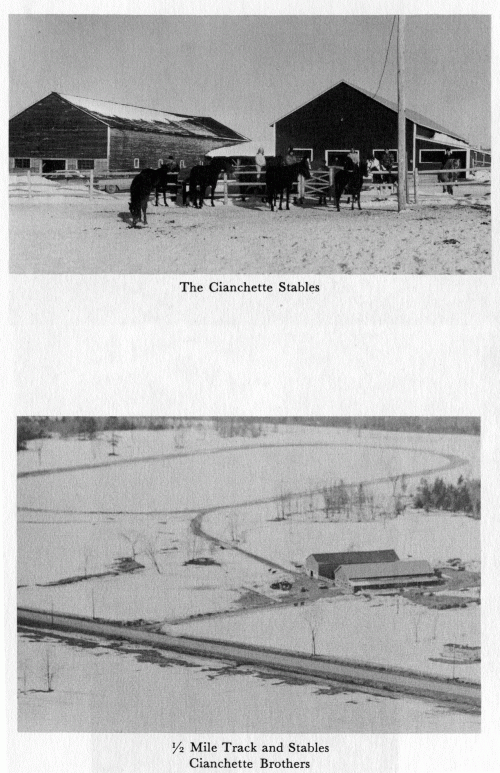
[Page 166.1]
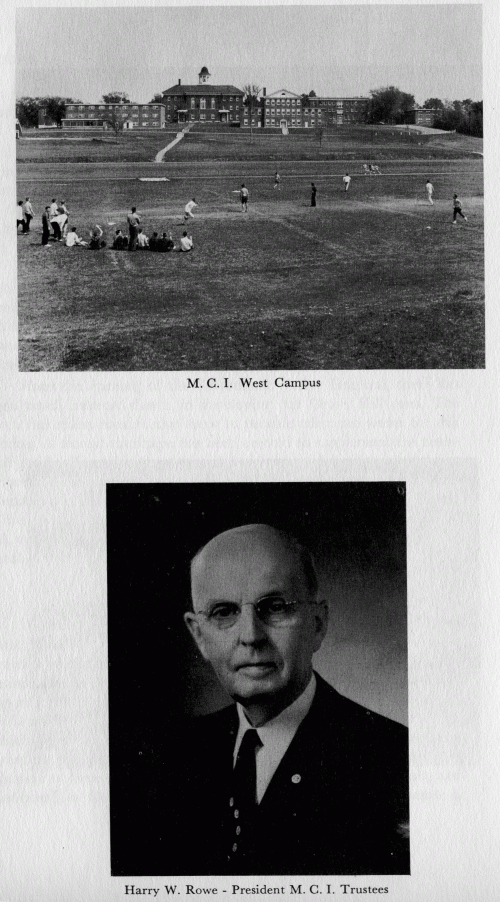
[Page 166.2]
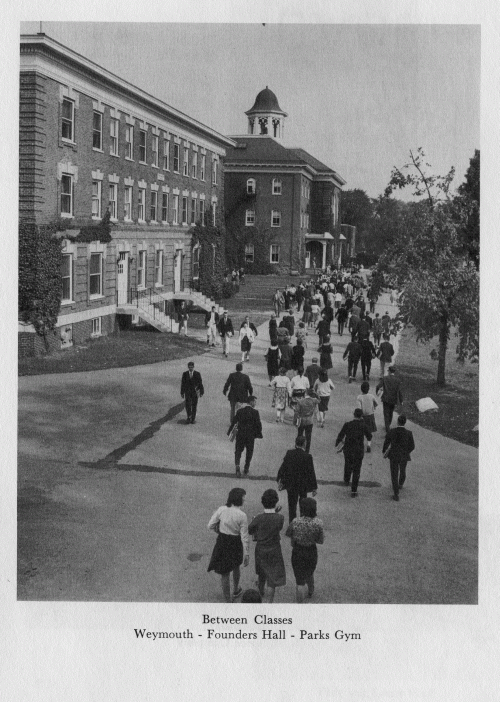
[Page 166.3]
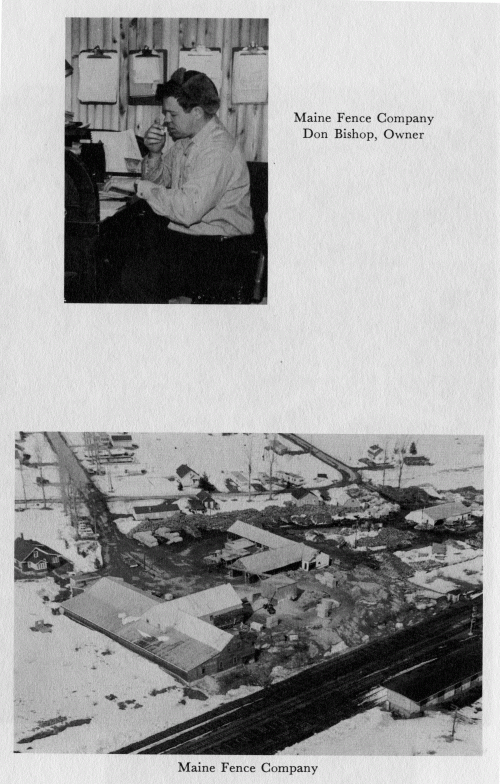
[Page 166.4]
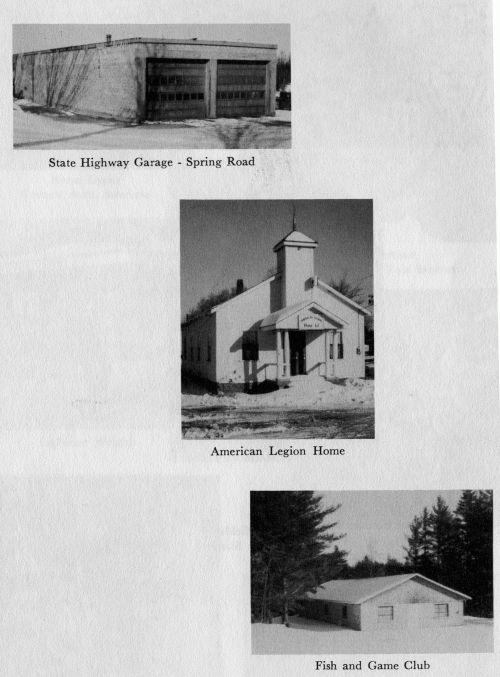
[Page 166.5]
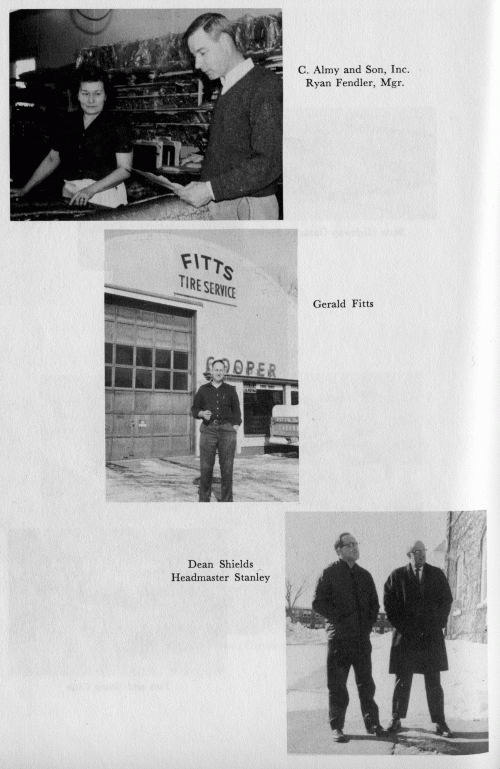
[Page 166.6]
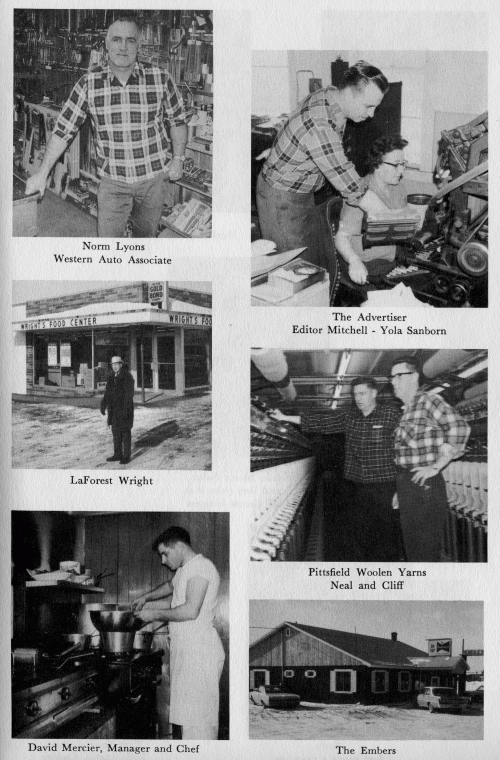
[Page 166.7]
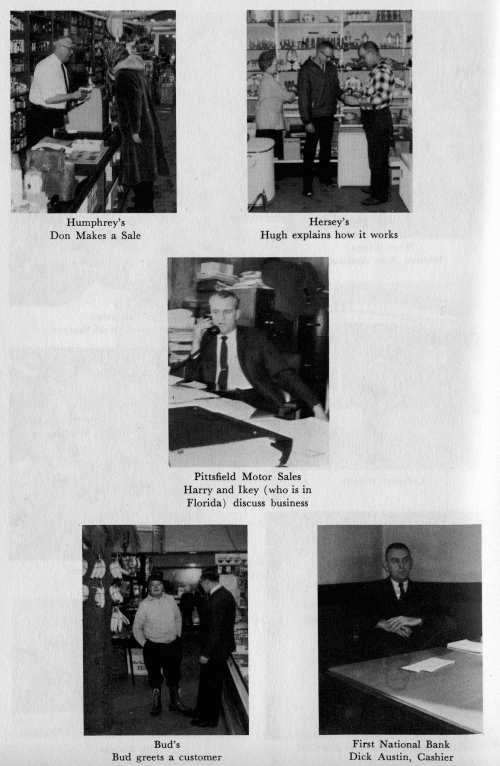
[Page 166.8]
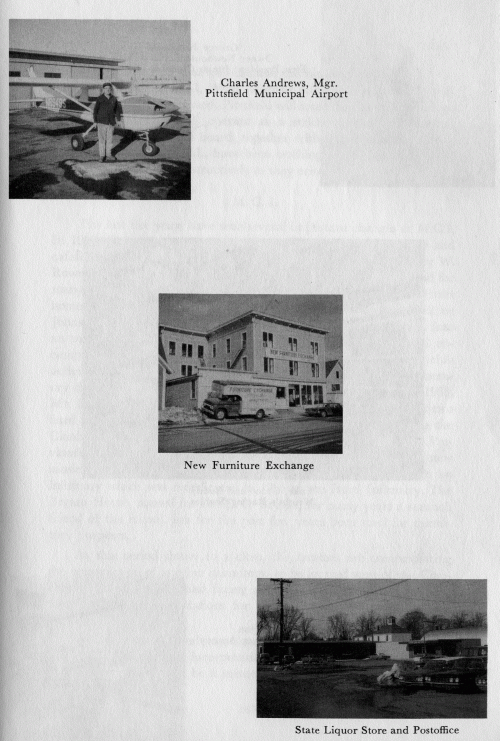
[Page 166.9]
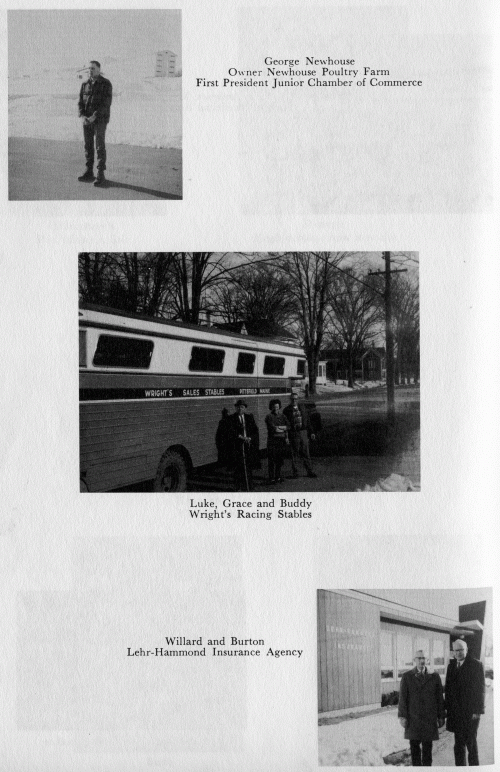
[Page 166.10]
junior high program that will include the ninth grade, which in the past has attended M.C.I. What happens after that is problematical, but if the trend is continued, Pittsfield will some day have its own high school and M. C. I. will operate as a strictly private preparatory school. The local school board, together with Superintendent Casey, and the trustees of M.C.I., have been working in close cooperation to meet these problems constructively as they arise.
M. C. I.
The last five years have seen several important changes at M.C.I. In 1960, the west campus was landscaped. In 1961, a dormitory and cafeteria building was erected and later named in honor of Harry W. Rowe, a graduate of the school, former Dean of Bates College, and for many years President of the M.C.I. Board of Trustees. The old Parks homestead on Hartland Avenue was given to the school in 1962 by Johnson W. Parks of Waterville and is rapidly being developed into an outstanding recreational facility. If plans materialize, it will encompass a golf course, a winter sports area, boating, and outing club activities. The donor is a nephew of George M. Parks, in whose memory the gymnasium and the campus athletic field are named. In 1963, Mr. E. N. Vickery gave the school land north of Alumni Hall for two hard surface tennis courts. In 1964, the machine shop owned by the Cianbro Mfg. Corp. was purchased to provide a music center. Previously the socalled Nye House was used for rehearsals. The new music center made it possible to convert the Nye property into an infirmary which was rededicated in 1965 as the Hurd Infirmary. The Bryant House, named for Dr. E. C. Bryant, for many years a staunch friend of the school, has for the past few years been used for dormitory purposes.
As this period draws to a close, the trustees are contemplating the construction of another dormitory, to be located west of the Cianchette Hall of Science and facing north. If these plans are realized, there will be accommodations for approximately 250 boarding students.
We have endeavored to relate a few of the highlights in the story of M.C.I, since its incorporation on February 1, 1866. Its 100th anniversary year should be a memorable one. Plans have been made
167
for an observance of this long record of service at the annual homecoming in August of 1966. Few schools have had a more commendable history, and more than 4000 graduates, scattered over the entire globe, can be justly proud of the contribution the centuryold institution has made to the world. It was founded in hope and with the prayers of dedicated men; it survived the difficult early years because of the faith and sacrifice of those founders and the devotion of a loyal teaching staff; and it has grown to its present stature because of the continued interest of its governing boards, high scholastic standards, and loyal support of thousands of alumni and friends. The dreams of the founding fathers have been abundantly realized.
CHURCHES
The Congregational Church was organized in 1960 with Rev. Scott Kittredge as pastor. For the first six months, the members met at the American Legion home on Manson Street. After an unsuccessful effort was made to purchase the property, the church, in 1961, obtained the Shorey Chapel on Park Street and in the next few years made extensive renovations. Further improvements were made in 1965 so that today, the denomination has an attractive sanctuary, a comfortable parsonage next door, and the Lane Fellowship Hall that provides Sunday School, a modern kitchen, and adequate space for social events.
Rev. Kittredge resigned in 1963 and was replaced by Rev. George Dillon, a student at Bangor Theological Seminary.
Among the highlights in the parish life of St. Agnes during the early 60’s, Father Girardin mentions that in 1962 the parish pledged $1000 for the Sebasticook Valley Hospital. In the same year, construction was begun for a new Rectory. L. N. Violette of Waterville was the contractor. It is a beautiful two-story colonial style building adjoining the Sacristy. It provides offices and comfortable living quarters for the local priest. On October 28, 1963, open house was held at the Rectory at which 177 persons visited the new home.
The Church of God, which had been located on Waverley Avenue, exchanged properties with the American Legion in 1964 and moved their parish to Manson Street. This is the old Methodist Church and has seen considerable history. While it was owned by
168
the American Legion, it was the scene of many outstanding events. County and State Legion meetings took place here; wedding receptions were frequently held in its spacious auditorium; and occasionally various church denominations have used it. It now serves its original purpose, a place of worship, and Rev. James T. Murray, the present pastor, is very pleased with the home it provides for his congregation. Rev. Peter M. Kemper accepted a call to the First Baptist Church in 1960. Before the family arrived, the parsonage was renovated. During the five years the Kempers were in Pittsfield, they made many friends for themselves and the church.
In December 1961, Mrs. Ruth Plummer Cook passed away. She had served as organist for thirty-five years. In the last years of her life, she directed a young peoples choir that contributed much to the church life. In this, she was ably assisted by Mrs. Clifford Humphrey. The chimes were donated by Mr. and Mrs. Cook shortly before her death.
A bulletin board was placed on the lawn of the church by friends in memory of Mrs. Cook.
Rev. Donald Hinckley returned to the Universalist Church following the resignation of Rev. Kittredge. His pastorate was a successful one. Rev. Hinckley and Rev. Kemper came to their respective churches about the same time and served for nearly the same period. Both were popular ministers, taking an active part in community affairs.
RACING
Pittsfield has always been a horsy town. The reader may recall the interest shown in the sport around the turn of the century when Dr. Drake, Col. Morrill, the Dustins, and other local personalities were wellknown in Maine for their speedy trotters and pacers. With the passing of these wellknown horsemen and the gradual deterioration of Union Park, interest faded. However, with the legalization of parimutuel betting in the 30’s, the rural fairs began to prosper and soon commercial tracks were built. J. R. Cianchette became one of the leading promoters of the sport and at one time had substantial interests in the Bangor Fair, the Lewiston Fair grounds, and a modern racing track at Gorham. Local enthusiasm was stirred and quickly
169
accelerated during the 40’s and 50’s. Today, racing has once again become a sizeable industry in Pittsfield. The L. Q. Wright Stables is probably the largest and most active harness horse racing establishment in the state. Between thirty and forty standard bred horses race under their colors in Canada and all parts of New England. The Cianchette brothers have built a fine halfmile track on the flats south of the village and offer training quarters for followers of the sport.
Along with harness horses, saddle horses have become popular and in recent years, Pittsfield horses are appearing with increasing frequency at the shows around the state. The Cianchette stables provide an excellent center for housing and training many of these animals. The very young set have ponies quartered here, and it is a pleasant sight to watch them start out together for a brisk workout. In the Memorial Day parades, these horses and ponies have become leading attractions.
The story of Pittsfield cannot be concluded without mentioning the impact of Route 95. The throughway was completed in this area in 1964. There was, of course, considerable controversy over the question of one or two exits. Although the town voted overwhelmingly in favor of two exits, we were given only one, and that leading onto Somerset Avenue, which is now heavily traversed by the children from Vickery School. It is difficult for some to understand why the largest town between Waterville and Bangor was treated so arbitrarily. It is a situation which someday may be remedied. The ironical part of the whole affair is that a Pittsfield man, Fred Eaton, took an active part in laying out the highway when it was first proposed. Mr. Eaton, who was Director of Planning in the Highway Department, fought hard to get the road to go along its present route in order that it might service the more heavily populated areas. At that time, there was a school of thought that advocated a more direct route from Augusta to Bangor.
Although his argument prevailed, Fred never lived to see the highway constructed. He was a very able and fair official, and if he had lived to see changes that took place in Pittsfield after the preliminary plans for the highway were drawn, I am sure he would have understood our problem and attempted, at least, to see it solved. The increased industry, the new grammar school, and the congestion at
170
the Main Street exit presented strong arguments for altering the original plans.
If the reader will examine the highway map issued by the Highway Commission in 1963 and illustrating the route proposed for this area, he will observe the notation in the lower right-hand corner that the data for the map was compiled in 1958, five years in advance of the final decision to allow Pittsfield only one exit, and that on a street that at certain hours of the day is clogged with motor vehicles and school children.
The highway itself is a tremendous improvement. We are now within short driving range of Bangor, Waterville, and Augusta. There are those who feel that such easy traveling will encourage people to trade out of town. On the other hand, it makes Pittsfield an easier place to reach. Parents of M.C.I, students, for instance, no longer dread the drives from out of state. It has brought us closer to the large centers of population. We can look forward to the day when many who work in Waterville, Bangor, or Augusta, will find Pittsfield within easy commuting distance. Our schools, our churches, our recreation facilities should encourage new citizens to build homes and enjoy the attractions of a friendly town.
What the future holds for Pittsfield, no one can say, but we have every reason to be optimistic. As in all communities, it rests in the hands of the young generation, and in this respect, we are most fortunate. We are especially blessed with able and civic-minded young men and women who have their sights lifted high. Barring unforeseen circumstances beyond local control, we should prosper and live happily, if not forever after, at least for another generation. As one who is retiring from the scene, I can only wish them, God Speed and Happy Landings!
171
|